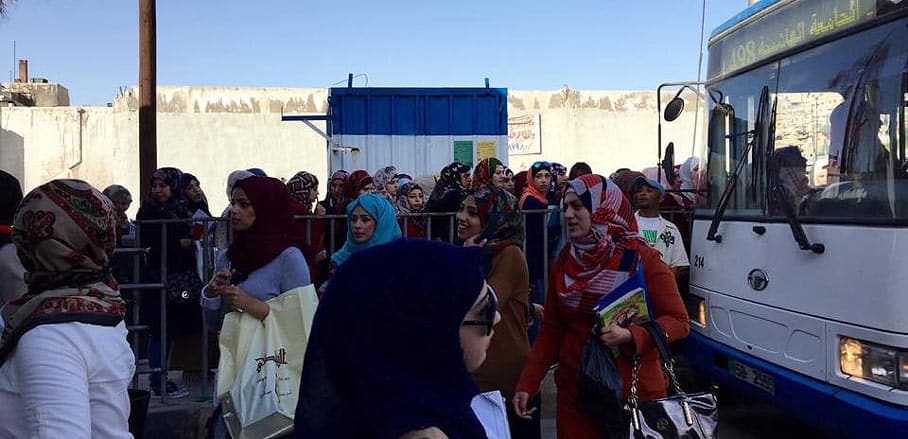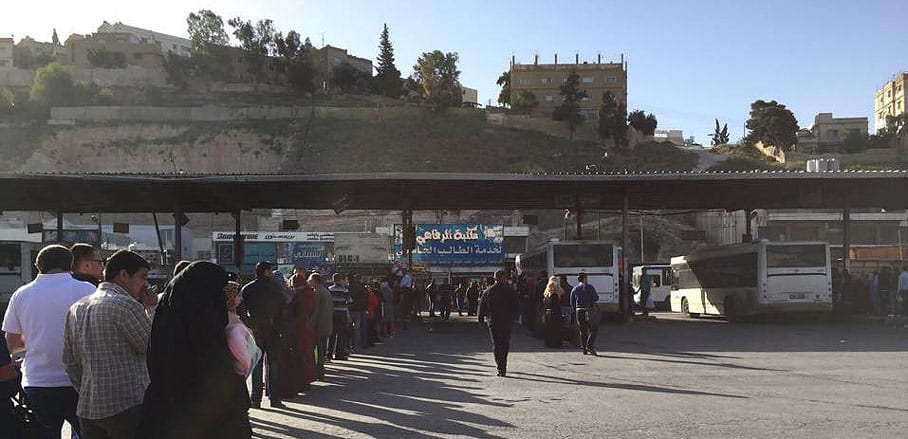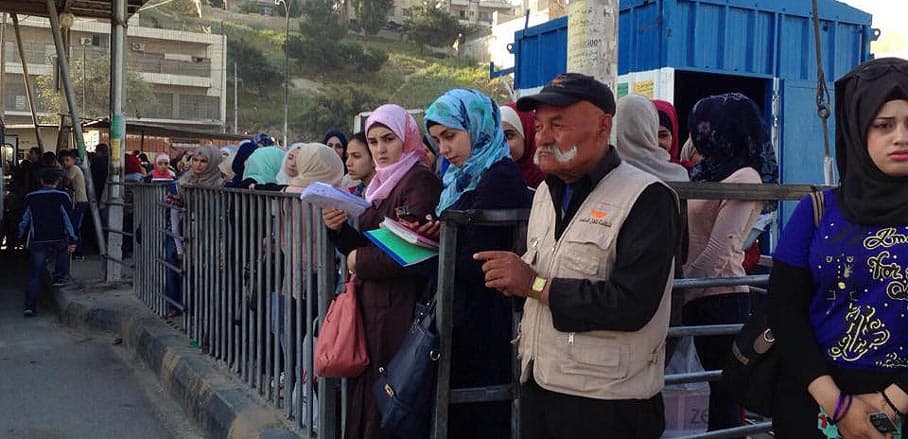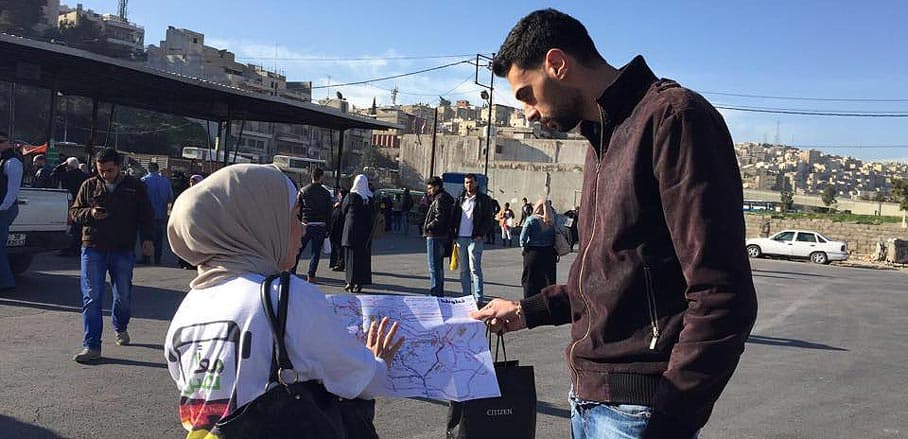Jordan Needs More Innovative Solutions for its Transport Woes
Public transport in Jordan remains unreliable, weakened, and fragmented. Government solutions so far have focused solely on building new systems and reorganising individual bus operators. Hazem Zureiqat argues that a wider set of solutions, focusing on innovation and technology, should be considered.
Creating a Bus Map for Amman
After moving jobs between two different parts of Amman, Jordan, it took one of the city’s residents more than a week to learn about bus lines in the new area and figure out the best route to and from work. They had to ask around and inquire from other users and bus drivers before finding an answer.
This problem – the lack of clear information on public transport routes – was one of many observed in a 2015 study (available in Arabic) documenting the user experience on public transport in Amman. The study was carried out by the Centre for the Study of the Built Environment, in collaboration with Maan Nasel (Arabic for “together we arrive”), a public transport advocacy campaign founded in 2014.

© Maan Nasel
To address this lack of information, volunteers from Maan Nasel embarked on the task of creating a bus map for Amman. They manually collected data on about one hundred public transport routes in the city and, working with a local design company (SYNTAX), published the first-ever public transport map for Amman in early 2016. The map was dubbed “Khutoutna” (Arabic for “our routes”), signifying the people’s ownership of the system.
The map later evolved into a smartphone app, and Maan Nasel co-organised two hackathons to further improve on the app. Khutoutna continues to be lauded not only by public transport users who want to find their way around, but also as an example of how relatively simple, yet innovative, citizen-driven solutions can go great lengths to improve users’ experiences.
Urban Mobility in Jordan
The story of this map serves as an important lesson for policymakers today as we struggle to deal with an increasingly challenging mobility landscape in Jordan.
With a population of 10 million, Jordan today is witnessing challenges that are not uncommon to the developing world. Car ownership is increasing at over 6 per cent per year; transport contributes close to half of the country’s energy bill, and about a fifth of greenhouse gas emissions. The public transport system is fragmented and weakened, offering a low quality of service for a captive segment of the population with no other options for travel.

© Maan Nasel
In a strained public budget, subsidies for public transport are negligible, and services are left to run when there are enough passengers on board to cover the costs, rather than on a fixed schedule. This further reduces the quality of service and drives people away to buying a private car whenever they can afford to do so.
It’s a classic vicious cycle.
Despite recent noteworthy improvements (among which is a new, scheduled bus service in Amman and two Bus Rapid Transit (BRT) systems under construction), much of these improvements are coming at a snail’s pace when compared to increasing car dominance and traffic congestion levels.
So how do we get out of this vicious cycle and accelerate the pace of change? I think the answer lies in how we frame the problem.
A New Perspective on Public Transport
For much of the last two decades, official discourse on public transport largely remained unchanged. Public statements tended to focus only on two types of solutions: “building” new services – either through buying new buses or building rapid transit systems such as light rail or BRT – and consolidating fragmented informal operators into companies. The vast majority of the public transport fleet in Jordan is individually owned and operated, and talking about the “problem of individual ownership” (as opposed to corporate ownership of vehicles) has become like a broken record.
I believe this narrow lens through which the solution has been viewed is problematic for two reasons. First, it has not changed for many years and has not considered advancements in mobility services and technologies worldwide. Second, it presents the so-called solutions of rapid transit and operator consolidation as ends, rather than means, and fails to address the core issue, which is, simply, providing better service to the end user!
We need to shift the paradigm and go back to the basic questions: how do we provide Jordanians with safe, reliable, and affordable alternatives to the private car, and how do we ensure those alternatives sustain an advantage over the private car at least for certain people or for a certain type of trips?

© Maan Nasel
When we frame the situation with these questions, we broaden the types of solutions available to us. We start thinking of innovative, technology-based solutions that, I would argue, can help Jordan leapfrog certain types of transport services rather than follow the more conventional route.
Rather than focusing our efforts only on consolidating operators into companies (as important as that may be), we should consider implementing and enforcing nationwide service quality standards. We should consider redefining contracts with bus operators to ensure that they have an incentive to abide by those quality standards (sticking to a schedule, for example, rather than waiting for the bus to fill up). That can have a much more direct impact on users.
Similarly, rather than waiting for new rapid transit systems to be completed, why don’t we work on improving existing services in the meantime, even those that are individually owned and operated? Incorporating technology, even a simple tracking device, to provide users with real-time information on an otherwise highly unreliable service, can truly help many of its users today.
Why don’t we use technology to introduce bus services that have more dynamic routes and schedules to better meet people’s travel patterns and reduce the need for a subsidy? Our neighbours in Cairo have done exceptionally well with these types of services.
I may sound like I’m lowering the bar or advocating for marginal improvements in the service rather than large-scale endeavours. On the contrary, I believe Jordan is in dire need of ambitious public transport infrastructure projects, and I think we should aim high. I would like to see more BRT systems in place, and even a national passenger railway service someday.
But we need to start somewhere, and we need to appreciate the urgency of the situation at hand. If a simple bus map created by a group of volunteers has shown us anything, it is that we must create the space for more smart, innovative solutions that can create a positive impact today.
